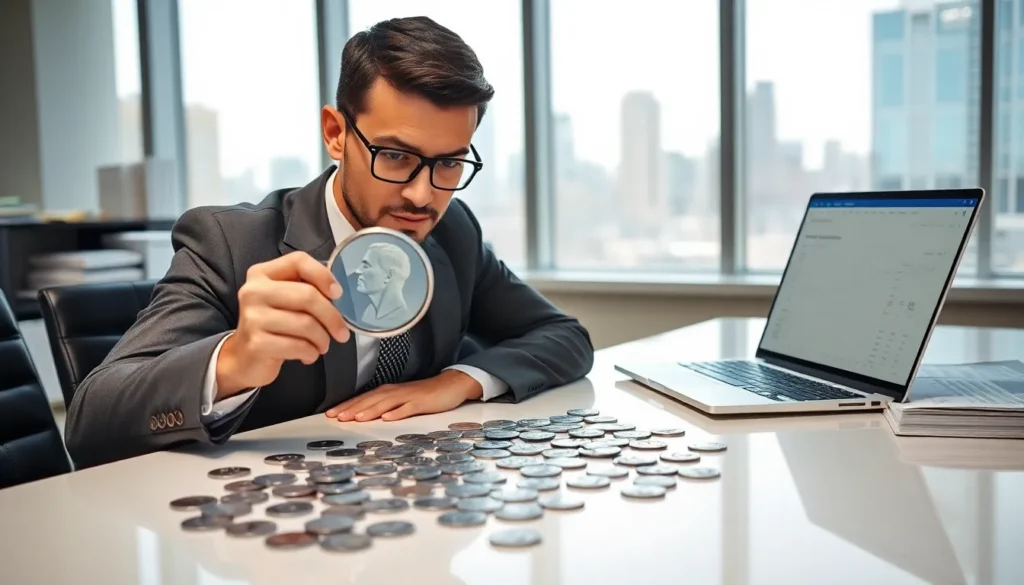Ever rummaged through your change jar and wondered if you stumbled upon hidden treasure? Modern dimes might not be as glamorous as gold or silver coins, but trust us, some of them are worth a pretty penny. Picture it: you thought you were just collecting bus fare, but what if that dime could fund your next vacation instead? In this text, we’ll investigate into the world of dimes, highlighting which modern dimes could put a little jingle in your pocket and how you can spot them. Ready? Let’s immerse.
Introduction to Modern Dimes

Modern dimes have been a staple of American currency since they were first minted in 1796. Interestingly, our beloved dime hasn’t gone through drastic changes in design over the centuries. Fast forward to recent years, and many folks may still think of dimes as mere pocket change. But, a deeper dive reveals that some of these coins could actually hold significant value, beyond their ten-cent face value.
For collectors and casual enthusiasts alike, understanding modern dimes is essential. The current dime showcases the portrait of Franklin D. Roosevelt on its obverse, while the reverse features an olive branch and a torch, a symbol of peace and liberty, respectively. This design is a nod to Roosevelt’s efforts in promoting social welfare during his presidency. Yet, there’s more to these coins than meets the eye: certain dimes can fetch impressive amounts in the collectors’ market.
What Makes a Dime Valuable?
So, what sets certain dimes apart from the rest? A combination of factors determines a dime’s worth, providing a fascinating insight into the coin collecting realm.
Rarity is king: Coins that were minted in lower quantities or those that had production errors tend to fetch higher prices. For example, dimes from particular years or minting locations can be quite sought after.
Condition plays a pivotal role as well. Coins that are in excellent condition, like uncirculated or proof coins, are much more desirable. A worn-out coin might not hit more than its face value, but a pristine specimen? Now, that’s a different story.
Another factor is historical significance. Emblems or inscriptions that reflect notable historical moments can elevate a coin’s value. For instance, dimes celebrating important milestones or events usually catch collectors’ attention.
Key Types of Modern Dimes Worth Collecting
Let’s break down some of the modern dimes that collectors have their eyes on:
Silver Dimes (Pre-1965)
While technically not modern in the strictest sense, silver dimes manufactured before 1965 are still appealing today. These coins contain 90% silver and carry intrinsic value above their face value. If you find any, consider holding onto them.
1982-1983 Dimes
Notably, the dimes minted in these years were struck using a different mixture of metals, making them distinct in composition from their predecessors and successors. For collectors, this makes them special, particularly in uncirculated condition.
1996-W Dimes
This particular coin was minted as part of the Olympic commemorative series and is often overlooked. But, because only a limited number were produced, this coin can be quite valuable, especially in mint condition.
2009-D Dimes
In 2009, a special run of dimes was minted to celebrate the 100th anniversary of the Denver Mint. These dimes are prized for their limited quantity, and many collectors actively seek them out.
These are just a few examples: but, they highlight how certain modern dimes carry the potential for increasing in value, making them worthy of collectors’ attention.
Factors Affecting the Value of Dimes
When assessing the value of dimes, several key factors come into play, shedding light on what to look for when evaluating your coins:
Mint Mark
Understanding the mint mark on a dime is essential. It indicates where the coin was produced, Philadelphia, Denver, or San Francisco, each contributing differently to the rarity and value of the dime.
Coin Grade
The grade of a coin, which informs its condition, can significantly impact value. Coins graded by professionals using well-established criteria can trade at premium prices compared to ungraded ones. Familiarize yourself with grading scales such as the Sheldon Scale (ranging from 1 to 70) to understand better how your dime stacks up.
Provenance
A dime with an interesting history, such as ties to famous collectors or noteworthy sales, could be dramatically more valuable. Collectors often pay a premium for the story behind a coin.
How to Sell or Trade Your Dimes
Selling or trading dimes requires a few clear steps to ensure you get a fair deal:
Research
Before approaching a buyer or dealer, conduct thorough research on your coins. Know their approximate market values by consulting price guides and reputable coin databases.
Find Reputable Dealers
Seek out well-established coin dealers who specialize in dimes. Reading online reviews and checking credentials can guide you toward trustworthy professionals.
Attend Coin Shows
Coin shows offer a fantastic opportunity to connect with buyers and other collectors. Plus, you’ll have the chance to showcase your collection to a broader audience, potentially increasing your chances of selling a dime at a competitive rate.
Staying Informed About Dime Values
To ensure you’re always in the loop about dime values, consider tapping into various resources:
Online Communities
Joining online forums or social media groups dedicated to coin collecting can lead to valuable insights. Many enthusiasts share updates on current market trends and price fluctuations.
Price Guides
Investing in a coin price guide can help you understand the historical and current values of dimes. Updated editions are often published annually, reflecting recent sales and market shifts.
Attend Workshops
Look out for workshops or classes offered by local coin clubs. Such events often provide education on valuation, grading, and appraisal of coins, which can be immensely beneficial for collectors.













